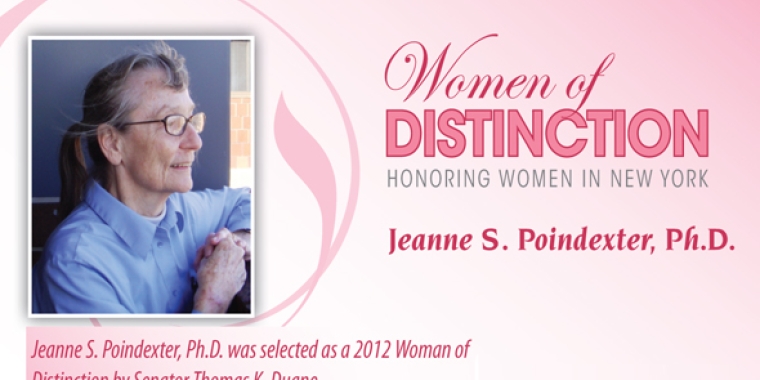
Testimony By New York State Senator Thomas K. Duane Before The New York City Department Of City Planning Regarding The Scoping Of The Proposed East Village/lower East Side Rezoning
My name is Thomas K. Duane and I represent New York State's 29th Senate District, which includes a section of the East Village that the New York City Department of City Planning (DCP) has included in the proposed East Village/Lower East Side rezoning plan being discussed today.
As you know, the current study area for the rezoning plan covers approximately 114 blocks generally bounded by East 13th Street to the north, Grand Street to the south, Avenue D to the east and Second Avenue to the west, and is located within Manhattan Community District 3. I applaud DCP for addressing in this draft some of the concerns that the community raised after seeing the prior version. However, I urge DCP to include even stronger provisions to ensure the preservation of our neighborhoods' character by decreasing the allowable Floor Area Ratios (FAR) in areas with proposed Inclusionary Zoning (IZ), and by increasing the amount of permanent affordable housing needed to qualify for the bulk bonus. I also recommend that additional blocks be included in the study area for the rezoning to be sufficiently comprehensive.
I would like to express my appreciation to DCP for initiating this plan to protect two of our most vulnerable neighborhoods from rampant and inappropriate overdevelopment. These areas, as you know, are currently zoned either as R7-2 or C6-1 districts, both of which offer no height limits and allow new high-rise developments to tower above the average four to seven story low-rise buildings that comprise the region. In response to this exposure, DCP has proposed to rezone sections of this area to R7A, R8B, R7B, C4-4A, R8A, or C6-2A contextual zoning districts: all these designations would limit maximum building heights to a specified measure and collectively foster the creation of more affordable housing.
However, in exchange for IZ provisions within the rezoning to promote the construction of affordable housing, DCP has proposed a general upzoning throughout the area by increasing the base FAR allowed from the original R7-2 and C6-1 district restrictions. Additionally, the FAR bonuses offered to developments that qualify for the IZ program add an even greater amount to the already generous base FARs proposed. I strongly urge DCP to moderate its proposal by incorporating the following changes:
* First and Second Avenues, Avenues A, C, and D, Forsythe, Essex, Allen and all streets north and south of Houston Street that are 75 feet or more in width should be rezoned to R7A districts with a base FAR of 3.45 and an IZ FAR of 4.6.
* Houston and Delancey Streets should also be rezoned as a new, contextual IZ district that has a base FAR of 4.5, an IZ bonus up to 6.0 and a height cap of 100 feet.
These revisions would be much more in keeping with the scale and context of the neighborhoods than the massive 5.4 residential FAR, 6.0 community FAR, 6.5 community facility FAR and 7.2 IZ FAR as currently proposed with the R8A and C6-2A zoning districts. I applaud DCP's efforts to encourage the creation of more affordable housing, but I do not believe that the cost should be the destruction of our neighborhoods' character.
I also urge DCP to take this opportunity to promote even more affordable housing by increasing the 20% residential floor area qualification limit for the IZ bonus to at least 30%. As DCP is well aware, our City’s residents are in danger of being forced out of their homes because of exorbitant rents and gentrification forces. DCP needs to protect our residents by insuring the creation of more permanent affordable housing for households at or below 80% of the area's median income. This process should be conducted under a tiered system where lower income households would be proportionally and fairly included.
DCP should also provide detailed information in its Environmental Impact Statement (EIS) on the location and extent of current commercial and retail uses below Houston Street. This information should be used to develop appropriate use regulations in this area to curb the current proliferation of commercial hotels and nightlife establishments. Provisions in the EIS should require buildings receiving government financing or tax abatements to be "Leadership in Energy and Environmental Design" (LEED) compliant, energy efficient and "green." And in order to better protect our City's historic buildings, a landmark survey of the rezoning area should be initiated and the results incorporated into the zoning.
In addition, to ensure that this rezoning plan accomplishes the goals of preservation that DCP has set forth, I implore DCP expand the boundaries to include the corridor between Third and Fourth Avenues bordered by East 9th Street and East 13th Street, and the mid-blocks extending slightly East from Third Avenue. This entire area is currently zoned a C6-1 district, which lacks limits on building heights, encourages community facilities and commercial development in a predominantly residential area, and does not limit the transfer of air rights. As a result, New York University has been able to begin "as-of-right" construction of a 26-story mega-dorm at the old St. Ann's Church site at 120 East 12th Street. Once completed, this dormitory will overwhelm its neighboring buildings, obstruct views, block light and air, and irreversibly alter the skyline. I fear that this mega-dorm is but a harbinger of inappropriate and out-of-scale overdevelopment to come if this area is not protected soon. I also urge DCP to heed calls by the community to include the Bowery in its zoning proposal. The historic and culturally diverse nature of this street, which is an integral part of the East Village and Lower East Side as well as NoHo, Little Italy and Chinatown, is being systematically eradicated by unprecedented development. As we act to protect the character and context of the East Village and Lower East Side, it only makes sense to include this key artery.
Thank you for allowing me to testify today and for your consideration of my recommendations. I look forward to working with DCP as well as the community in further refining this zoning proposal.
